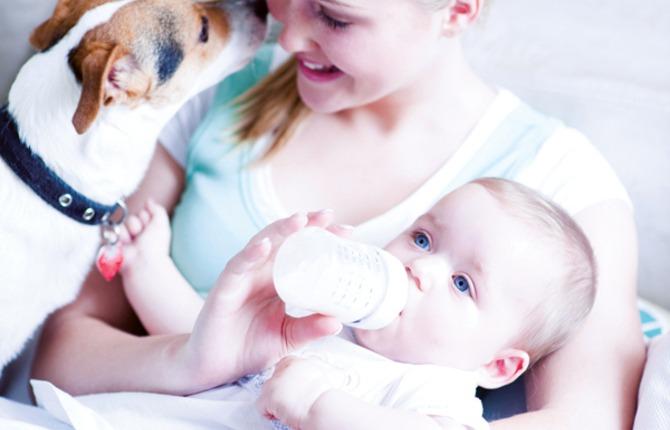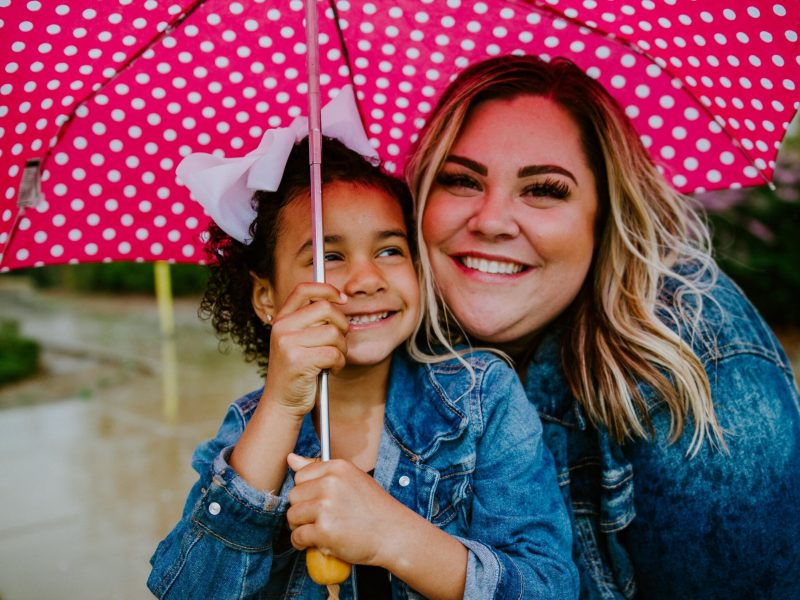
Preparing the family dog for the arrival of a new baby
By Vanessa Lupton
For many, the first child they have will have four legs, be covered in fur and will have a cold, wet nose with a penchant for cookies and squeaky toys. Whether you bring home a puppy, or adopt an adult dog, those first few years will be a time for bonding, relationship building and infinite snuggles.
But what happens when you receive news that you will soon have a new bundle of joy? One that cries, crawls, and grabs anything within reach?
With a new baby on the way, expecting parents may feel a variety of emotions ranging from excitement to fear, and many have questions about raising dogs and kids together.
According to Dogs and Storks, a program initiated by Family Paws Parent Education, the first question expectant mothers ask is whether or not the family dog knows that she is pregnant. Pregnancy brings many changes for expecting moms both emotionally and physically. Changes in one’s scent, posture and moods are normal parts of pregnancy and as dogs are experts in observing and recognizing these subtle changes, some dogs may react to these changes with a variety of behaviours that range from increased attention-seeking to aggression. Since a woman’s posture changes when she is pregnant, some dogs may view their ‘mom’ as more vulnerable or in need of protection.
So what can you do to help prepare your dog for the sights and sounds of a newborn? The Dogs and Storks program suggests carrying a doll or stuffed animal around the home to get an idea of what your dog’s reaction will be to you when your hands are full and you are engaged with something connected to you. Adding in a carrier such as a car seat with a handle, or sling, will help create the most realistic situation. Playing a CD with the sound of a baby can also help expecting parents feel more confident as it will give them a better understanding of how their dog might react to the new noise. As every dog reacts differently to sound, this activity will alert owners to any noise sensitivity their dog might have.
For parents who want to take their preparation one step further, hiring a trainer or behaviourist can prove beneficial. A behaviourist will be able to help identify and decrease attention-seeking behaviours such as pawing, barking and jumping, and will teach families about the subtle signals and body language that their dog portrays. A behaviourist or a trainer will also help pet owners to identify and implement designated “dog zones”. By utilizing baby gates, pet owners can effectively create spaces where the dog is unable to interact with the baby but is still allowed to engage with the family.
After all of the pre-baby preparation, there are a number of do’s and don’ts for parents to take into consideration once their newborn has arrived.
Do invite the dog over for a sniff. Don’t force an interaction if your dog is not interested or is fearful.
Do include your dog in a comfortable safe way when at home. Don’t isolate the dog from the family by putting it outside or locking in another room.
Do close the door to the nursery. Don’t allow your dog unsupervised access to the nursery.
Do remind your dog what you want it to do when it approaches the baby (i.e. sit, stay). Don’t scold your dog for being curious.
Do secure the dog with a leash and collar and use awake- adult supervision, allowing your dog to be with you but without direct access to the baby. Don’t ever leave the baby and the dog together unsupervised.
Family Paws Parent Education works to increase safety and reduce stress in homes with babies or young children and dogs. In providing their two courses, Dogs and Storks and Dogs and Toddlers, they seek to increase awareness on canine behaviours, and decrease the number of dogs surrendered to shelters due to preventable canine conflicts. For more information or to obtain resources, visit www.familypaws.com






